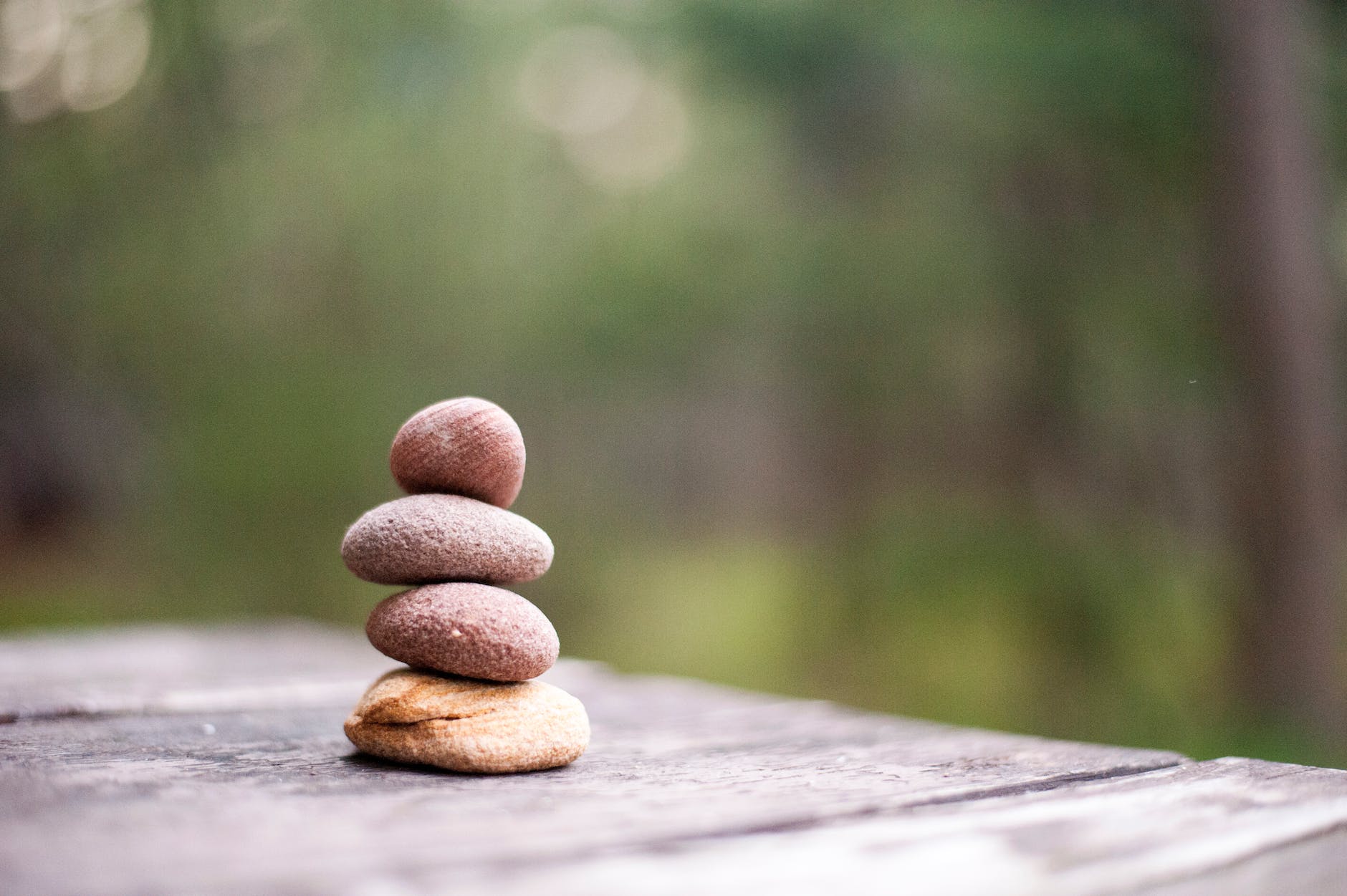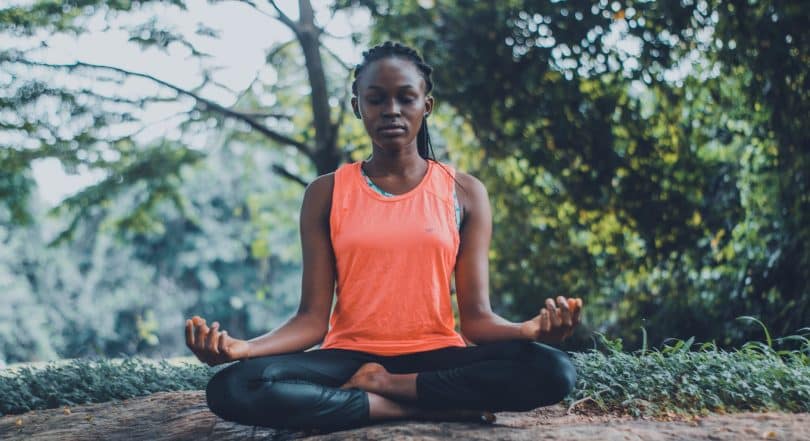Meditation is an important part of many religions and spiritual paths because it can help you connect with the divine or to explore your inner self. For some, guided meditation is a form of therapy used to improve mental health and wellbeing. But our lives are so busy and full of distractions that it can be tough to find time for ourselves to connect with our bodies and souls.
Since guided meditation makes it easy to find that peace and stillness we’re searching for, understanding its essence and practicing can be revolutionary for you. In this detailed guide, you’ll learn everything you need to know about guided meditation and how it can help you connect with your inner self.
If you feel like you’re constantly running on autopilot and struggling to find calm in your hectic life, guided meditation may be just what you need. Whether you’re a beginner or an experienced meditator, this guide will help you deepen your practice and connect with your inner peace.
So, let’s get started!

What is Meditation?
Guided meditation is a form of therapy in which you focus on breathing in and out while also paying attention to a particular guided visualization or affirmation. The goal of guided meditation is to help you become more aware of your thoughts and feelings in the present moment, without judgment. This allows you to let go of stress and anxiety, and focus on the present moment, while feeling calmer.
You can do a guided meditation with or without music, but it is vital to sit somewhere comfortable and silent, where you don’t face any interruption. It’s also good to set a timer for 5-10 minutes, so you can focus on your breath without worrying about the time.
Once you are ready to meditate, close your eyes and concentrate on your breath. Inhale deeply through your nose while feeling your stomach expand and exhale through your mouth, focusing on the entire process.
As you breathe deeply, observe your thoughts and feelings as they arise and pass away. If you find your mind wandering, simply refocus on your breath.
Once you have reached a state of inner peace, you can begin to focus on your intentions. It is important to set an intention for your meditation before beginning. This could be something simple like “I am seeking peace” or “I am open to guidance from my higher self.” Then, let go and allow the guidance to come through. When your timer goes off, slowly open your eyes and take a few deep breaths before getting up from your place.

What are Three Strong Pillars of Meditation?
The three main pillars of guided meditation are concentration, mindfulness, and acceptance. Let’s quickly go over them to understand better:
- Concentration is the ability to focus on a single object or thought. In guided meditation, this might be a particular word or phrase that you repeat to yourself, or it might be your breath. By training your concentration, you learn to focus your attention and let go of distractions.
- Mindfulness is the practice of being present in the moment. It means observing your thoughts and feelings without judging them as good or bad. In guided meditation, mindfulness can help you notice when your mind has wandered from the present moment and gently bring it back.
- Acceptance is about letting go of resistance. It means recognizing that thoughts and feelings are just temporary mental states that come and go. Trying to fight against them only creates suffering. When you learn to accept them, you can find peace even amid difficult emotions.
These are just a few examples of how concentration, mindfulness, and acceptance can be used in guided meditation. By exploring these pillars, you can deepen your practice and find greater peace and calmness in your life.
Things Needed for Guided Meditation
To truly benefit from meditation, you must have a clear and focused mind. However, achieving this level of peace can be difficult to attain in the hustle and bustle of everyday life. Thankfully, there are a few tools that can help to create the ideal environment for meditation. Here’s what you need to meditate:
- Having a comprehensive guide to meditation is your first step towards a calmer aura. This guide can be in the form of a book, audio recording, or even a phone app. This meditation handbook can provide instructions on understanding the essence of mindfulness and starting it while maintaining focus during your practice.
- Next, a meditation cushion can help you maintain a comfortable position for an extended period. Make sure the cushion you get supports your spine and lets you sit comfortably for extended periods.
- Lastly, a white noise machine can assist in creating a calm and peaceful environment by blocking out distractions from the outside world. Deep sleep music is good if you suffer from a whirlwind of thoughts and need subtle distractions to sleep peacefully.
Besides these three tools, you don’t need anything to set yourself up for success with guided meditation. Get these, and you’re good to start your meditation journey!

Steps to do Guided Meditation
Guided meditation is a mindfulness practice that connects your soul to your body and enables you to live in the present moment. In meditation, you focus on a particular object, such as your breath, a mantra, or a visual image. You can also focus on the sensations in your body or the emotions that arise during meditation. Here are the steps to follow for guided meditation:
- To get started with guided meditation, sit somewhere comfortable and noise-free.
- Close your eyes and take a few deep breaths.
- Then, begin to focus your attention on your breath.
- You can also play deep sleep music to calm yourself and clarify your thought process.
- Notice the sensation of the breath as it enters and leaves your body.
- If your mind begins to wander, return your focus to your breath.
- You can also try focusing on a mantra or a word or phrase you repeat to yourself during meditation.
- Once you have finished meditating, take a few deep breaths and open your eyes.
You can practice guided meditation anytime, anywhere. And remember, the goal of meditation is not to clear your mind of all thoughts. Rather, it is to focus your attention on the present moment and become more aware of your thoughts and emotions. With regular practice, you will find more peace and calm in your life.
Which Time is Best for Guided Meditation?
The best time for guided meditation is when you can find the most peace. For some people, this means early morning before anyone else is up and about. The world is still peaceful at this time, and you can take advantage of the quiet to focus your mind and connect with your innermost thoughts. Others find that late night is the best time for meditation when the hustle and bustle of the day has died down, and they can finally relax and clear their minds. Whichever time of day or night you choose, make sure there are no distractions so that you can fully commit to your meditation practice.
What can Deep Sleep Music Help You With?
In our fast-paced world, making time to relax and get a good night’s sleep is often tough. Too often, we find ourselves tossing and turning, our minds racing with all the things we have to do tomorrow. If you’re looking for a way to wind down and get some rest, deep sleep music may be just what you need.
Studies have shown that listening to music can help to slow down your heart rate and breathing, leading to a deeper, more restful sleep. The key is to find music that is slow and calming, without any jarring rhythms or lyrics that could keep you awake. There are many versions of deep sleep music, so experiment until you find something that works for you. Soon you’ll be getting the restful sleep you need to face the challenges of the day ahead.
Rounding Up
When you live a content life, you don’t allow your mind to constantly race from one thing to the next. Instead, you focus on the present moment to connect with your innermost thoughts. Guided meditation can help you gain this type of inner peace. With guided meditation, you focus on your breath and let go of any intrusive thoughts or worries – something most of us struggle with.
Over time, you develop a deeper understanding of your mind and what makes you happy. As a result, you can better live in the present moment and enjoy true contentment. With a little practice, you can learn to quiet your mind and find the peace and happiness that comes from living a content life.
If you plan on doing your meditation in the great outdoors, make sure to check out our post on backpacking first!










